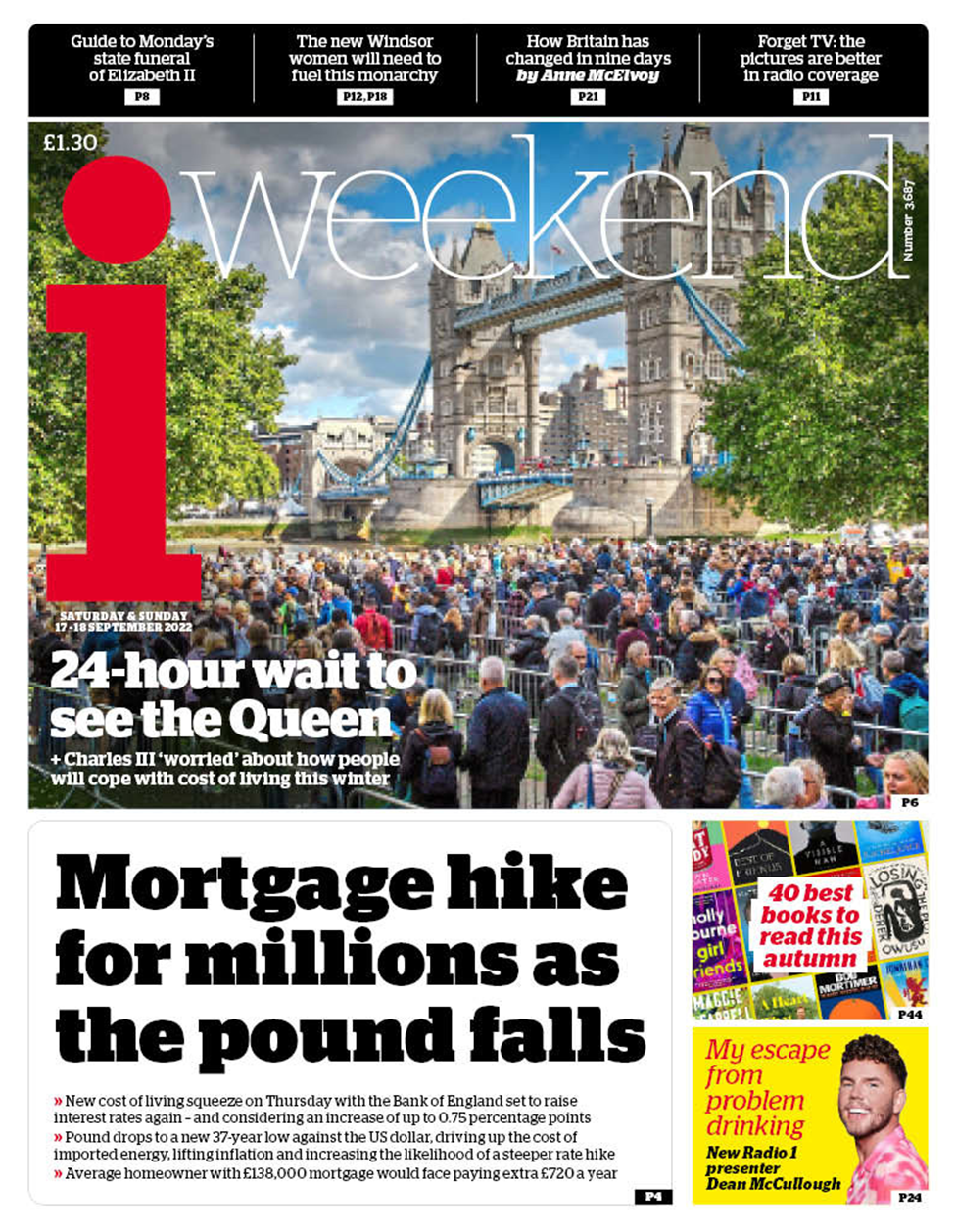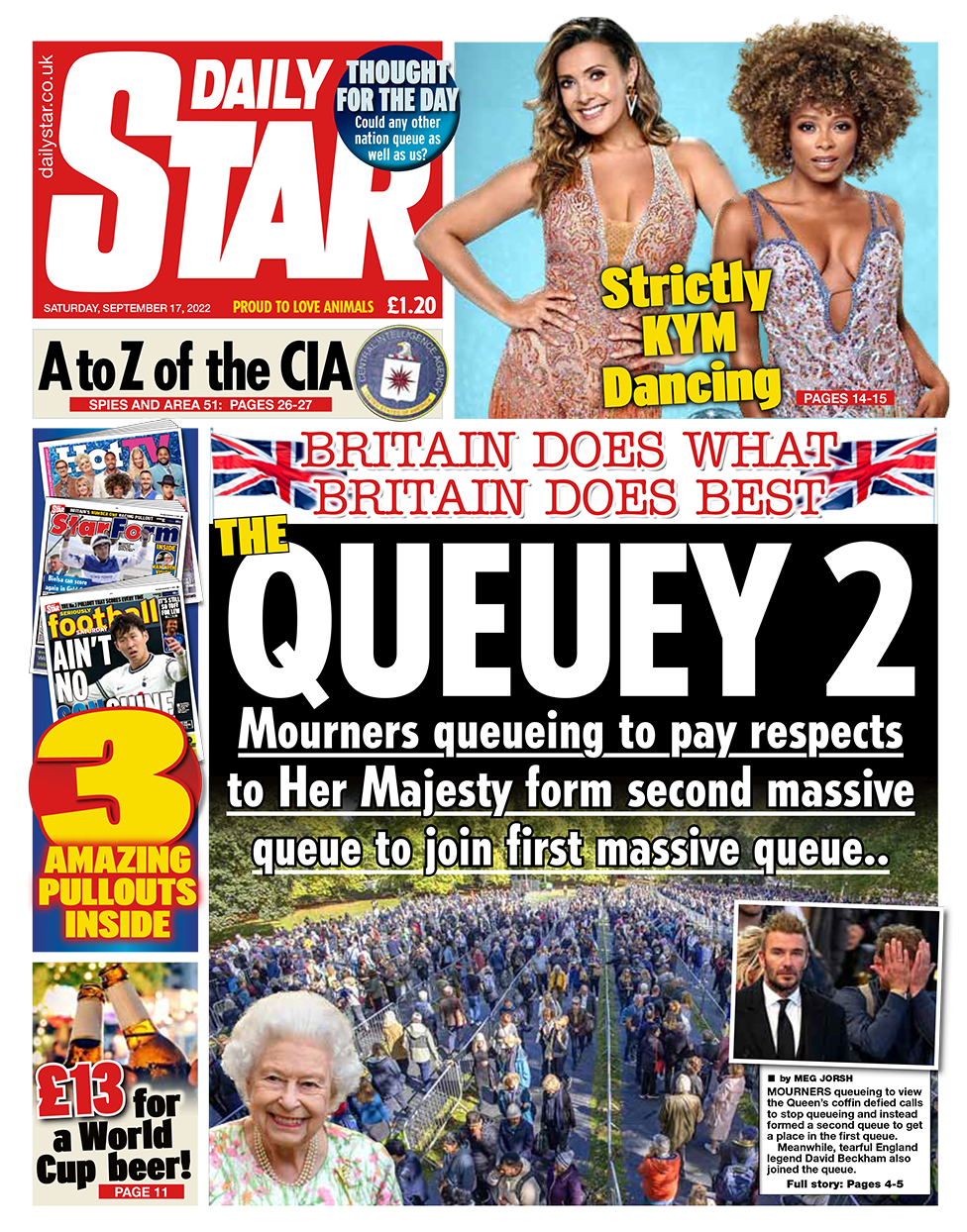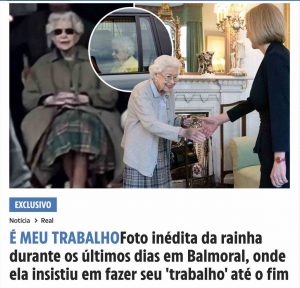London – Two days before Queen Elizabeth’s funeral, the queue to see the coffin and the events around it continued to be the main topic of newspapers, TV and social networks with the hashtag #TheQueue on Twitter.
The main news this Saturday morning is waiting 24 hours to get to the House of Parliament where the coffin is located.
Authorities are asking people no longer to go to central London to try a place. However, with the unwitting encouragement of the media, it becomes a difficult request to fulfill.
window.uolads.push({ id: "banner-300x250-3-area" });
TV stations continue to broadcast live footage of the queue and endless repetitions of interviews with people waiting or already done to pay their last respects. The agenda has become an image of a lack of journalistic creativity, if any, in this case.
The reporters, who walk awkwardly with our interviewees, ask the obvious questions: “Why did you come here?” or “how many hours have you been” or “are you tired?”.
At the exit, the questions are about impressions. And the answers are as expected, because who dares say they’re queuing up to see someone they’re not a fan of or that they don’t like what they see?
Members of the public told Sky News that witnessing the Queen’s four children standing guard at Westminster Hall was an “incredible experience” and “the most touching thing”.
Read more here: https://t.co/kWJwB7Q1Cm pic.twitter.com/pY2iWy3kXW
– Sky News (@SkyNews) 16 September 2022
The queue coverage is a reflection of the media show planned for the funerals of a queen who has transcended media technology of all ages.
There are events planned for each of the 10 days between death and burial to create new points of interest for newspapers, TV and social networks.
Some surprises – nice – do happen, like the “discovery” of former football player David Beckham, who has been queuing for 13 hours to say goodbye to the Queen.
The story became a hit on social media and television and was recorded in all the newspapers, some with headlines on the cover.
Also Read | David Beckham spends 13 hours queuing and Queen Elizabeth II. He gets emotional as he bids farewell to Elizabeth.
The stabbing of two police officers, a man arrested Friday night for trying to approach the coffin, and other reports being arrested for harassing women in line are alarming.
The ceremony planned three events for yesterday: Prince Charles’ visit to Wales as part of his tour of all the nations of the kingdom; Prince William and Kate meet with soldiers from key Commonwealth countries and a vigil for Queen Elizabeth’s children during prime time.
Queen Elizabeth’s four children stand guard by her coffin in Westminster Hall.
King Charles, Princess Anne, Prince Andrew and Prince Edward will guard their Mothers in the State for 15 minutes. pic.twitter.com/YFUwPh2nnY
– Royal Center (@RoyalCentral) 16 September 2022
Despite the political significance of the Wales visit, the vigil received more attention from the print media, and three newspapers chose a picture of the remorseful King Charles on their front pages.
But not all newspapers followed the scenario of the deification of the monarchy and Queen Elizabeth. The Guardian once again challenged the official narrative by questioning the existence of the Saudi Arabian monarch, who has been accused of human rights abuses.
See how the newspapers covered Queen Elizabeth’s funeral
The Guardian gave more coverage to Queen Elizabeth’s death on Saturday than any other day, but not as Buckingham Palace aides would have liked. Newspaper, Saudi Prince Mohammed bin Salman II. He highlights the criticism for his visit to London to honor Elizabeth.
The move came from Hatice Cengiz, the comrade of journalist Jamal Khashoggi, who was allegedly killed on the orders of the monarch in front of the Saudi Arabian embassy in Istanbul. The leader’s presence was denounced by Genghis and human rights groups as a “stain” on the monarch’s memory.
The issue is thorny for the monarchy, who has friendly ties to Arab royalty in many countries, and especially for King Charles, who has recently been involved in controversy over the donations of Arab millionaires to his charity.

The other half of the Guardian’s cover was lighter, with a photo of David Beckham and an attempt to stay anonymous in a traditional hat.
It had already been discovered at the time the photo was taken, and security guards were trying to move the line.
The 24-hour queue to see Queen Elizabeth was the headline, but the caption already points to the future, reflecting a statement by King Charles on Friday about Britain’s biggest problem, the cost of living concerns. .
Although the king has no governing powers, it is a good move for the people to express their concerns, to neutralize the perception of a monarchy disconnected from the reality of its subjects.
The newspaper also drew attention to the decline in the pound and the economic problems of the country, where a new king was appointed to replace Queen Elizabeth during a difficult period in the life of the nation.

The Daily Star jokes about the British obsession with queuing, with a headline saying that Brits do what they do best.
The newspaper shows the second line formed after the “official” line was shut down for six hours on Friday morning to welcome those waiting to see Queen Elizabeth’s coffin.
It also highlights the next celebrity Beckham. The former player appears to have a heartfelt admiration for the queen as she was awarded the OBE (Order of the British Empire), but the positive publicity comes at a good time following a controversy over a contract to promote the Qatar Cup.

More importantly, the Financial Times had no headlines on the death of Queen Elizabeth on Saturday, but chose a photo of the row with London Bridge in the background to show off its cover, citing an impressive 24-hour headline. to wait.
London Bridge is the name of the plan for Queen Elizabeth’s funeral.

Unlike other newspapers, the photo in The Times is that of the ever-star Kate visiting soldiers from Australia, New Zealand and Canada, a strategic political action to strengthen ties with nations where the movements no longer have a British monarch as chief. After the death of Queen Elizabeth, the state becomes stronger.
Prince William was with him, but the newspaper opted for an aesthetic cover, with the elegant Kate in a symbolic pose with her hand over her heart.

But the main story is also about the tail, signed by political columnist Quentin Letts. The headline is emotional: “Silence speaks loudly” opens a first-person, poetic text that is often nonstandard for a major daily newspaper front-page story.
In the side column, the Times makes up for the poem with news and highlights King Charles’ concern over the cost of living.
The headline “One nation” on the cover of the Daily Mirror was captured entirely by a photo of the king in front of Queen Elizabeth’s coffin and smaller photos that included moments of rowing throughout the day. The text highlights the country’s unity in an “explosion of love and respect”.

Used on the Daily Express with the same emotional tone, the same photo, and a simple “We’ll always be with you, ma’am.”

The Daily Telegraph’s headline, “Devotion to Duty, and the text highlights the thousands of people standing in line 24 hours a day to honor Queen Elizabeth. And mention the famous David Beckham.
The image is of the children before the coffin. And examples from the last days bring up other issues, the bottom of the cover of which is not the death of the queen.
But it is the subject of a special 76-page issue highlighted at the top of the front page. Voluminous supplements are published daily by various newspapers, making the publishing industry a joy.

The Sun tabloid newspaper devotes its entire front page to the image of Queen Elizabeth’s children around the coffin, with the headline “King and country saying goodbye.”
The text refers to the luck that some of the subjects had when they witnessed the moment when their child’s seizure occurred.
And at the top is a call for news about the Queen’s final days in Balmoral.

What happened in those days and the cause of Queen Elizabeth’s death remained a mystery – and The Sun, like other newspapers, brought nothing to clarify.
The internal report includes just one never-before-seen photograph of the queen watching a harmonica band under a gazebo. According to the newspaper, the image was taken by a guest.

The text is a repetition of previously reported facts, and tells of dinners that took place days before his death, during which the monarch was happy and excited, but with the doctors on duty.
Sun does not speculate or report on the cause of death, which remains under lockdown and is a secret that the British media are not interested in revealing as different versions proliferate in other countries.
The cause of Prince Philip’s death, aged 99, was also not officially reported, but his death certificate was recorded as “old age”.
Also Read | To weigh or to market? 3 in 5 Brits think brand praise for the Queen is ‘not from the heart’
source: Noticias

